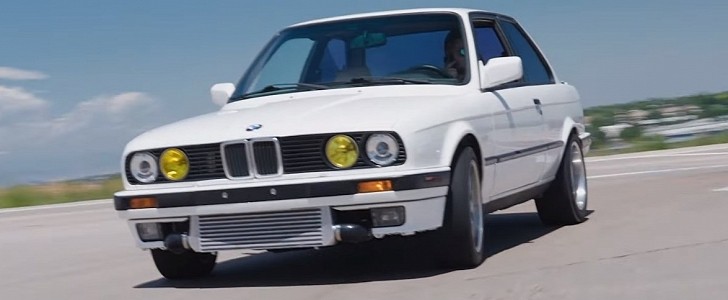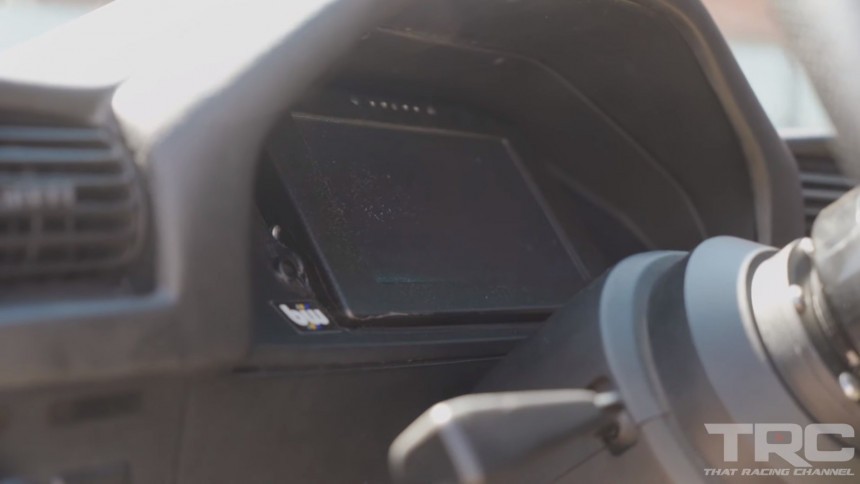The BMW E30 is still a popular platform for tuning enthusiasts, despite its age. Even though E30 numbers are dwindling because of rust, as well as the age of the platform, people are still out making project cars out of them, and the results can be stunning.
This example started as a 1989 BMW 325is, which was tuned by its former owner to develop around 270 horsepower. That is a healthy increase from its stock figures, but it was not enough for Connor, who decided to ditch the old M20B25 and move on to something that will provide big numbers with a more familiar recipe.
The answer might offend purists, but Connor put a 2JZ under the hood of this E30. He acquired a brand-new bottom end, as well as a new cylinder head, and the mods kept adding up. To keep things simple, he mated the 2JZ-GTE to a Toyota R154 transmission, which is a five-speed unit that is known for its durability.
Surprisingly, the vehicle still runs on its factory axles, which were never meant to handle this kind of power, but they are also the weak link in this setup. Retaining factory axles also meant keeping the stock differential, but implementing a modified driveshaft to mate the Toyota gearbox to the BMW running gear.
The 2JZ has an AEM Infinity engine management setup, which is a standalone unit, and Connor even installed a digital dashboard to avoid a wiring nightmare and get the cleanest possible setup. As you can observe, the interior of his vehicle is stock, and there is no boost gauge, air-fuel meter, or oil pressure gauge in sight. It is all in the digital dashboard, so get with the times, elder citizens.
Running on pump gas, this sleeper E30 with a 2JZ can provide 566 horsepower, but switching to E85 can raise its output to 774 wheel horsepower. The Dynojet that was used to measure its output estimated crank horsepower at 929, but that is just an estimate. Regardless, it is stunning if you think about it.
This 2J did not make that kind of power alone, as it has a Precision 6466 turbo to provide a hefty amount of boost after goingthrough the front-mounted intercooler (FMIC), which is one of the elements that give this car away as not being stock.
The rear exhaust is one of the most understated that we have seen on a vehicle with this much power, and it should make some tuning enthusiasts reconsider their choices when they check their noise/whp ratio.
The owner describes the result as being “rowdy” once you get grip, which should happen if the temperature is just right for the Toyo R888R tires that go on aftermarket wheels that resemble a stock BBS model that was made for BMW back in the day, but the wheels do have quite a bit of lip to them, so it is easy to see that they are not stock.
Behind the wheels, you can spot a set of Wilwood brakes, which were a necessary upgrade with almost 800 wheel horsepower on tap. The front axle has six-piston calipers, while the rear has four-piston ones, which is a massive improvement from the stock E30 brakes, designed in the 1980s to handle a mid-sized car with less than 180 crank horsepower.
The owner is wise enough to not turn up the boost even higher with the stock axles, which are bound to snap like twigs if a standstill launch is attempted.
Moreover, Connor noted that the chassis has reached its limits where power is concerned, so this E30 might just stay with this output for now, which does provide a great power-to-weight ratio when considering its 2,800-lb. (ca. 1,270 kg) weight.
The answer might offend purists, but Connor put a 2JZ under the hood of this E30. He acquired a brand-new bottom end, as well as a new cylinder head, and the mods kept adding up. To keep things simple, he mated the 2JZ-GTE to a Toyota R154 transmission, which is a five-speed unit that is known for its durability.
Surprisingly, the vehicle still runs on its factory axles, which were never meant to handle this kind of power, but they are also the weak link in this setup. Retaining factory axles also meant keeping the stock differential, but implementing a modified driveshaft to mate the Toyota gearbox to the BMW running gear.
The 2JZ has an AEM Infinity engine management setup, which is a standalone unit, and Connor even installed a digital dashboard to avoid a wiring nightmare and get the cleanest possible setup. As you can observe, the interior of his vehicle is stock, and there is no boost gauge, air-fuel meter, or oil pressure gauge in sight. It is all in the digital dashboard, so get with the times, elder citizens.
This 2J did not make that kind of power alone, as it has a Precision 6466 turbo to provide a hefty amount of boost after goingthrough the front-mounted intercooler (FMIC), which is one of the elements that give this car away as not being stock.
The rear exhaust is one of the most understated that we have seen on a vehicle with this much power, and it should make some tuning enthusiasts reconsider their choices when they check their noise/whp ratio.
The owner describes the result as being “rowdy” once you get grip, which should happen if the temperature is just right for the Toyo R888R tires that go on aftermarket wheels that resemble a stock BBS model that was made for BMW back in the day, but the wheels do have quite a bit of lip to them, so it is easy to see that they are not stock.
The owner is wise enough to not turn up the boost even higher with the stock axles, which are bound to snap like twigs if a standstill launch is attempted.
Moreover, Connor noted that the chassis has reached its limits where power is concerned, so this E30 might just stay with this output for now, which does provide a great power-to-weight ratio when considering its 2,800-lb. (ca. 1,270 kg) weight.














